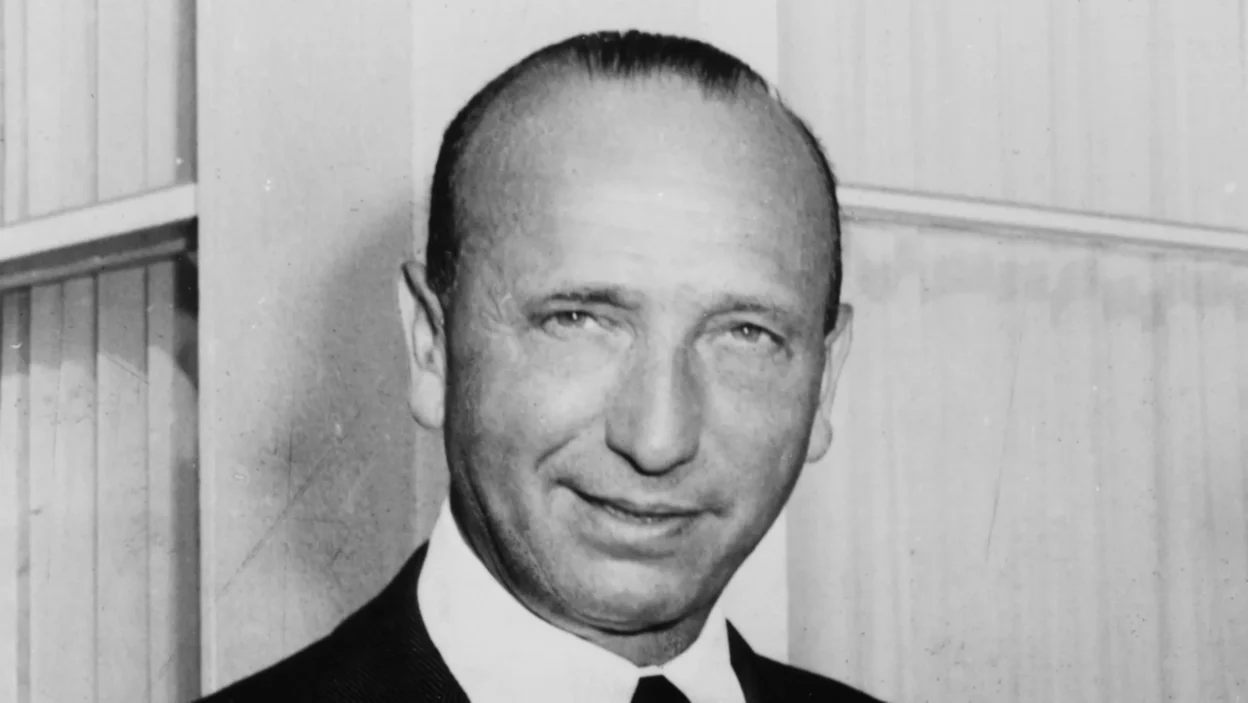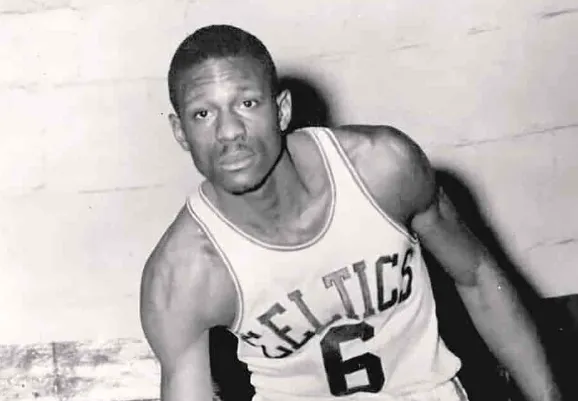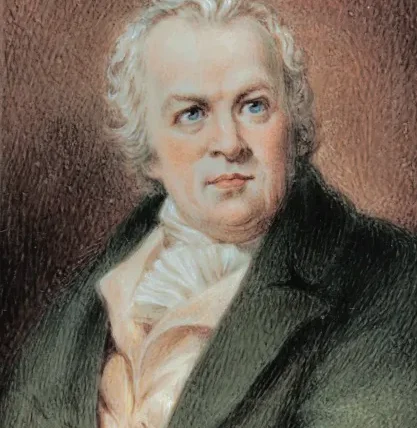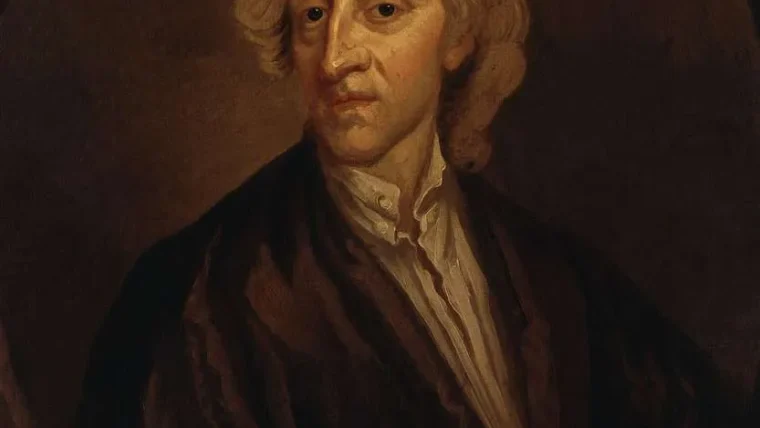Introduction
In the annals of cinematic history, Michael Curtiz stands as a towering figure whose indelible contributions have left an indomitable mark on the world of filmmaking. From his early years in Hungary to his illustrious career in Hollywood, Curtiz’s journey is a testament to the power of artistic vision and determination. This comprehensive biography seeks to unravel the life and artistry of a director whose name resonates through the ages.
With a career spanning over five decades and a filmography that includes some of the most iconic titles in cinema history, such as “Casablanca,” “The Adventures of Robin Hood,” and “Yankee Doodle Dandy,” Curtiz’s legacy remains an enduring source of inspiration for filmmakers and cinephiles alike. This book offers an in-depth exploration of the man behind the camera, providing insights into his early life, his creative process, and the enduring impact of his work on the silver screen.
Delving deep into the narrative, we will explore the genesis of his passion for filmmaking, his journey to Hollywood, and the challenges he faced along the way. We will witness the magic he weaved in the Golden Age of Hollywood and how his directorial genius brought some of the most celebrated stories to life. We’ll also delve into his personal life, uncovering the man behind the camera and the values that guided his art.
Through meticulous research and a wealth of anecdotes, this biography aims to be the definitive account of Michael Curtiz’s life, offering readers a glimpse into his unique style, iconic collaborations, and the making of timeless classics. Additionally, we will uncover lesser-known aspects of his career, including lost projects and uncharted territory in his filmography.
As we navigate through these pages, readers will gain a deeper appreciation for the man behind the camera, his impact on modern cinema, and his enduring influence. Join us in this journey through the life of a master filmmaker, whose name will forever be etched in the annals of cinematic history.
Early Life and Inspiration
Michael Curtiz’s journey as a master filmmaker begins in Budapest, Hungary, where he was born on December 24, 1886, as Manó Kaminer. His early life was marked by an insatiable curiosity and a fascination with the world of storytelling. From a young age, he exhibited a remarkable talent for the arts, particularly in theater and music.
Growing up in Budapest, Michael Curtiz was surrounded by a vibrant cultural milieu. The city’s rich artistic heritage left an indelible mark on the budding artist. He was captivated by the performances at the National Theater and the Hungarian State Opera House, and he often attended productions with his family. These early experiences sparked his interest in the world of entertainment, and it wasn’t long before he began to experiment with acting and directing in school plays.
Curtiz’s artistic inclinations were nurtured by his family, who recognized his burgeoning talent and encouraged his creative pursuits. His father, a well-known playwright and poet, played a pivotal role in his early artistic education. The young Michael Curtiz was exposed to the intricacies of storytelling, narrative structure, and character development from a very young age.
As a teenager, he made the decision to pursue a career in the arts, which led him to the Royal Academy of Theater and Art in Budapest. Here, he honed his skills and developed a deep understanding of the dramatic arts. It was during this time that he adopted the name “Mihály Kertész” to distance himself from his father’s fame and establish his own identity in the world of theater.
Curtiz’s passion for storytelling extended beyond the stage. He dabbled in writing and directing plays, demonstrating an innate talent for visual storytelling. His early works were marked by a unique blend of realism and emotion, foreshadowing the signature style that would later make him a Hollywood legend.
In 1912, Curtiz made his directorial debut in the world of cinema, creating a short film titled “Today and Tomorrow.” This milestone marked the beginning of his remarkable journey in film. Despite facing challenges and opposition, he continued to refine his craft and push the boundaries of cinematic storytelling.
The early chapters of Michael Curtiz’s life reveal a relentless pursuit of artistic expression, a commitment to honing his skills, and an unwavering passion for storytelling. Little did he know that his journey from the theaters of Budapest to the soundstages of Hollywood would forever alter the landscape of filmmaking, leaving an indelible mark on the art of cinema.
The Journey to Hollywood
As Michael Curtiz continued to explore the world of filmmaking in Hungary, he soon realized that his ambitions exceeded the opportunities available in his home country. The burgeoning film industry in the United States beckoned, and he harbored dreams of making a name for himself on the grand stages of Hollywood.
In 1926, Michael Curtiz took the bold step of leaving Hungary for the United States, seeking new horizons and a chance to bring his unique vision to the world. Upon his arrival in Hollywood, he quickly realized that the competition was fierce, and the industry was unforgiving to newcomers. However, Curtiz’s determination was unwavering.
With limited English language skills and an unfamiliar environment, Curtiz faced the challenges of adapting to a new culture and film industry. He was determined to succeed and was willing to take on any role that would allow him to learn the ropes of American cinema.
Curtiz’s big break came when he was offered a contract by Warner Bros. Studios in 1926. This opportunity allowed him to direct a series of silent films, marking the beginning of his Hollywood career. It was during this period that he embraced the Americanized name “Michael Curtiz” that he would be known by throughout his life.
Despite the transition to Hollywood, Curtiz’s European sensibilities and artistic background remained evident in his work. He brought a fresh and unique perspective to American cinema, combining the traditions of European storytelling with the emerging trends of Hollywood. His distinctive style began to emerge as he expertly blended elements of drama, romance, and adventure into his films.
Directing the Classics
Michael Curtiz’s directorial talent shone brightly in Hollywood, and he quickly gained a reputation for his ability to craft compelling stories. His mastery of the craft became evident as he directed a series of classics that remain iconic to this day.
One of his most notable early successes was “Captain Blood” (1935), a swashbuckling adventure starring Errol Flynn. The film’s success not only cemented Flynn’s status as a Hollywood leading man but also showcased Curtiz’s knack for creating visually stunning and engaging narratives. His innovative use of cinematography and direction of action sequences set a new standard for adventure films.
Another milestone in Curtiz’s career was the 1938 release of “The Adventures of Robin Hood,” also starring Errol Flynn. The film is still considered one of the greatest examples of the swashbuckling genre, with Curtiz’s direction earning accolades for its vibrancy and energy.
Curtiz was known for his ability to work across various genres, from romantic comedies like “Four Daughters” (1938) to crime dramas like “Angels with Dirty Faces” (1938). His versatility as a director allowed him to tackle a wide range of subjects, and he excelled in each genre, creating memorable cinematic experiences.
Michael Curtiz and the Golden Age of Hollywood
The 1930s and 1940s were a period often referred to as the “Golden Age of Hollywood.” It was during this era that Michael Curtiz’s career soared to new heights. His work played a pivotal role in defining the cinematic landscape of the time.
Curtiz’s keen sense of storytelling and his ability to bring out the best in his actors were key factors in the success of his films. His collaboration with legendary actor Humphrey Bogart resulted in some of the most enduring classics in cinematic history, including the masterpiece “Casablanca” (1942). The film’s blend of romance, drama, and wartime intrigue, combined with Curtiz’s deft direction, has solidified its status as a timeless classic.
“Casablanca” not only brought critical acclaim but also earned Michael Curtiz an Academy Award for Best Director. This film remains one of the most celebrated and beloved films in the history of cinema, and Curtiz’s contribution to its success cannot be overstated.
Curtiz’s prolific output during this period was astonishing. He directed numerous films, displaying his remarkable work ethic and creative vision. Notable works from this period include “Yankee Doodle Dandy” (1942), a biographical musical drama starring James Cagney as George M. Cohan, and “Mildred Pierce” (1945), a film noir classic that earned Joan Crawford an Academy Award for her performance.
The Golden Age of Hollywood was defined by its luminaries, and Michael Curtiz was undoubtedly one of its shining stars. His films not only entertained audiences but also left an indelible mark on cinematic history, influencing the course of filmmaking for generations to come.
The Challenges of Filmmaking
Behind the glamour and success of Hollywood, Michael Curtiz faced numerous challenges as a director. Filmmaking is a complex and demanding art, and Curtiz’s dedication to his craft often led to personal sacrifices.
One of the challenges he encountered was the pressure to consistently deliver commercially successful films. Hollywood studios operated in a highly competitive environment, and the financial success of a film could make or break a director’s career. This pressure often meant tight schedules and demanding production requirements.
Curtiz was known for his meticulous attention to detail, which sometimes led to clashes with producers and studio executives. He was determined to bring his artistic vision to the screen, even if it meant pushing the boundaries of time and resources. This determination, while contributing to the brilliance of his films, also created tension on set.
Additionally, the advent of sound in film, a technological advancement that coincided with Curtiz’s arrival in Hollywood, presented its own set of challenges. Directors had to adapt to this new medium, and Curtiz quickly demonstrated his ability to master it. His early sound films, such as “Noah’s Ark” (1928), were noted for their innovative use of sound and music.
Curtiz’s personal life also faced challenges, as the demanding nature of his work often took a toll on his family. Balancing the pressures of a directing career with his responsibilities as a husband and father was a constant struggle.
Despite these challenges, Curtiz remained committed to his craft and continued to deliver films of exceptional quality. His ability to overcome adversity and produce enduring works of art is a testament to his dedication to the art of filmmaking.
Curtiz and His Iconic Collaborations
Michael Curtiz’s brilliance as a director was enhanced by his collaborations with talented actors and crew members. Throughout his career, he formed lasting partnerships that enriched the cinematic experience and produced unforgettable moments on screen.
One of his most celebrated collaborations was with Errol Flynn. The duo worked together on multiple films, including “Captain Blood,” “The Adventures of Robin Hood,” and “Dodge City.” Their partnership is often cited as one of the most successful actor-director duos in Hollywood history. Flynn’s charisma and swashbuckling charm found the perfect counterpart in Curtiz’s dynamic direction, resulting in a series of timeless classics.
Curtiz also had a fruitful collaboration with actress Olivia de Havilland, who co-starred alongside Errol Flynn in several of his films. Their partnership extended beyond on-screen chemistry, as Curtiz’s direction brought out the best in de Havilland’s performances. This collaboration reached its pinnacle in “The Adventures of Robin Hood,” where de Havilland played the role of Maid Marian, creating a character that remains an enduring symbol of courage and romance in cinema.
Another key partnership that contributed to Curtiz’s success was his collaboration with composer Max Steiner. Steiner’s evocative and emotive musical scores perfectly complemented Curtiz’s visual storytelling. Their synergy is most notably exemplified in “Casablanca,” where the film’s iconic score, including the timeless “As Time Goes By,” became an integral part of the movie’s enduring legacy.
Crafting “Casablanca”: A Cinematic Triumph
“Casablanca,” released in 1942, is often hailed as one of the greatest films ever made. The film’s success was a testament to Michael Curtiz’s directorial genius and his ability to craft a cinematic masterpiece that transcends time.
The making of “Casablanca” was not without its challenges. The film’s script evolved during production, with multiple writers contributing to the story. Curtiz’s ability to adapt and improvise on set played a crucial role in shaping the final narrative. The film’s blend of romance, drama, and political intrigue required a delicate balance, and Curtiz expertly guided the cast and crew to achieve this.
The casting of “Casablanca” was another stroke of genius. Humphrey Bogart’s portrayal of Rick Blaine, a disillusioned American expatriate, and Ingrid Bergman’s luminous performance as Ilsa Lund were career-defining moments for both actors. Curtiz’s direction brought out the raw emotions and chemistry between the two, creating an unforgettable on-screen romance.
One of the film’s most iconic scenes, the singing of “La Marseillaise” in Rick’s Café Américain, exemplifies Curtiz’s skill as a director. The emotional intensity and patriotism of the scene have left an indelible mark on cinematic history. Curtiz’s use of deep focus and his ability to orchestrate large crowd scenes elevated the film’s visual impact.
“Casablanca” was a critical and commercial success, winning three Academy Awards, including Best Picture and Best Director for Michael Curtiz. The film’s enduring appeal lies in its timeless themes of love, sacrifice, and the moral dilemmas of wartime. Curtiz’s direction captured these themes with a rare and profound sensitivity.
The Warner Bros. Era
The Warner Bros. studio played a pivotal role in Michael Curtiz’s career, providing him with opportunities to create some of his most memorable films. Curtiz’s collaboration with the studio extended over two decades and resulted in a string of successful and influential productions.
The studio system of the era provided directors like Curtiz with a consistent stream of projects. This allowed him to hone his craft and explore a variety of genres. “The Sea Wolf” (1941), a gripping adaptation of Jack London’s novel, and “Mildred Pierce” (1945), a film noir classic, are just a few examples of his work during this period.
Curtiz’s ability to work within the studio system, meet production deadlines, and deliver quality films on a consistent basis earned him the trust and respect of Warner Bros. executives. His strong work ethic and determination to bring out the best in each project made him an invaluable asset to the studio.
The Warner Bros. era also witnessed Curtiz’s collaboration with other legendary actors, such as Joan Crawford in “Mildred Pierce” and James Cagney in “Yankee Doodle Dandy.” These collaborations resulted in critically acclaimed performances and further cemented Curtiz’s status as a director who could elicit exceptional work from his actors.
Michael Curtiz’s body of work during this era showcases his versatility and his ability to adapt to the demands of the studio system. His films remain a testament to his directorial skill and the enduring appeal of the classics he crafted.
Directorial Genius: Michael Curtiz’s Style
Michael Curtiz’s directorial style is characterized by its versatility, attention to detail, and a deep understanding of storytelling. His films are marked by several distinctive elements that set them apart and make them timeless classics.
Curtiz was a master of visual storytelling, using the camera to convey emotions and narratives. His use of tracking shots, deep focus, and innovative camera angles enhanced the cinematic experience. In “Casablanca,” his cinematography skillfully conveyed the complexities of the characters and the tension of the plot.
His ability to evoke strong performances from his actors is another hallmark of his style. Whether it was Bogart and Bergman’s chemistry in “Casablanca” or Joan Crawford’s tour-de-force performance in “Mildred Pierce,” Curtiz had an innate ability to bring out the best in his cast, making his characters feel real and relatable to audiences.
Curtiz’s films often featured complex and morally ambiguous characters. He explored themes of love, sacrifice, and the human condition, creating stories that resonated with viewers on a deep emotional level. His narratives were layered and multifaceted, providing ample material for analysis and interpretation.
Curtiz’s attention to detail extended to every aspect of his films, from set design to costumes. He meticulously crafted the visual elements of his movies to enhance the storytelling. This dedication to the aesthetic qualities of his work is evident in the stunning visuals of his films.
Michael Curtiz’s directorial style is characterized by its ability to create emotionally resonant stories, evoke strong performances, and deliver visually captivating experiences. His work continues to inspire filmmakers and captivate audiences, cementing his legacy as a master of cinematic storytelling.
Family and Personal Life
While Michael Curtiz’s professional life was marked by great success, his personal life was not without its complexities. The demands of a directing career often put a strain on his relationships and family life.
Curtiz married actress Lucy Doraine in 1918, and the couple had a daughter, Kitty, in 1919. However, the marriage was not without its difficulties, and it eventually ended in divorce. Curtiz’s intense focus on his work and the demanding nature of the film industry frequently took him away from his family, leading to strains on his personal life.
In 1929, Curtiz married actress Lili Damita, with whom he had a son, John, in 1932. While the marriage brought personal happiness and stability, Curtiz’s career remained his primary focus. The challenges of balancing family life and the demands of the film industry were a recurring theme throughout his life.
Curtiz’s relationships with his children were also marked by the pressures of his career. Despite his commitments to work, he maintained a strong bond with his son, John, who would later follow in his father’s footsteps as a director.
Curtiz’s personal life is a reminder of the sacrifices and challenges faced by individuals pursuing careers in the entertainment industry. His unwavering dedication to his craft often came at the cost of personal time and relationships.
The Legacy of Michael Curtiz
The legacy of Michael Curtiz is a testament to his enduring impact on the world of cinema. His films continue to captivate and inspire audiences, and his influence on the art of filmmaking remains undeniable.
Curtiz’s body of work includes over 100 films, spanning various genres and styles. His versatility as a director allowed him to leave his mark on a wide range of cinematic experiences, from swashbuckling adventures to dramatic romances. Many of his films, including “Casablanca,” “The Adventures of Robin Hood,” and “Mildred Pierce,” are celebrated as classics that have stood the test of time.
The director’s meticulous attention to detail and ability to evoke powerful performances from his actors continue to be studied and admired by filmmakers and cinephiles. His visual storytelling and innovative use of cinematography set new standards for the industry and contributed to the evolution of cinematic techniques.
The influence of Michael Curtiz’s work can be seen in the films of subsequent generations of directors. His impact on the art of storytelling, character development, and visual aesthetics has left an indelible mark on the world of cinema. Contemporary filmmakers continue to draw inspiration from his films, and his legacy lives on in the works of directors who have been influenced by his style and storytelling sensibilities.
Honors and Awards
Throughout his career, Michael Curtiz received numerous honors and awards that recognized his contributions to the world of cinema. His work was celebrated by both his peers and the industry at large.
One of the most significant moments in Curtiz’s career was winning the Academy Award for Best Director for “Casablanca” (1942). The film, which remains one of the most beloved in cinematic history, also won the Academy Award for Best Picture. Curtiz’s masterful direction played a pivotal role in the film’s success, and the award was a fitting recognition of his talent.
In addition to his Oscar win, Curtiz was nominated for several other Academy Awards throughout his career. His work on films such as “Angels with Dirty Faces” (1938) and “Yankee Doodle Dandy” (1942) received critical acclaim and earned him nominations in various categories.
Curtiz also received recognition from his peers in the industry. He was a member of the Directors Guild of America and received the DGA Honorary Life Member Award, a testament to his significant contributions to the field of directing.
In Hungary, his home country, Curtiz was honored with the Order of the Hungarian Republic. This recognition highlighted his success on the international stage and celebrated his roots in Hungarian cinema.
The honors and awards bestowed upon Michael Curtiz underscore his enduring impact on the world of filmmaking. His contributions to the art of cinema continue to be celebrated, and his name remains synonymous with excellence in directing.
Unveiling the Unseen: Lost Projects
While Michael Curtiz’s career is primarily associated with his iconic and celebrated films, there are several lost and lesser-known projects that offer a unique glimpse into the breadth of his creativity and versatility as a director.
One of these lesser-known projects is “Doctor X” (1932), a pre-Code horror film notable for its early use of two-color Technicolor. The film was innovative in its time, but it has largely faded into obscurity. Curtiz’s skill in creating suspenseful and atmospheric scenes is evident in this early horror work.
Another overlooked gem is “The Breaking Point” (1950), a film noir adaptation of Ernest Hemingway’s “To Have and Have Not.” While the film did not achieve the same level of recognition as some of Curtiz’s other works, it showcases his ability to navigate the complexities of the film noir genre.
“Life with Father” (1947), a family comedy, offers a departure from Curtiz’s more well-known dramas. The film was a box office hit in its time and remains a delightful example of Curtiz’s versatility as a director.
Uncovering these lost projects adds depth to our understanding of Michael Curtiz’s career. They highlight his willingness to explore various genres and experiment with new cinematic techniques, making him a truly multifaceted director.
A Master’s Impact on Modern Cinema
The influence of Michael Curtiz on modern cinema is profound and far-reaching. His legacy is not confined to the Golden Age of Hollywood but continues to shape the art of filmmaking in the 21st century.
Curtiz’s visual storytelling techniques, including the use of deep focus and innovative camera angles, have become staples of modern cinematography. Directors across the globe draw inspiration from his work, integrating his techniques into their own storytelling.
The emotional depth and complexity of characters in Curtiz’s films have set a standard for character-driven storytelling. His ability to create morally ambiguous and multidimensional characters has had a lasting impact on modern cinema, where character development is central to many contemporary films.
The enduring popularity of films like “Casablanca” and “The Adventures of Robin Hood” speaks to the timelessness of Curtiz’s narratives. Modern filmmakers continue to revisit and reinterpret these classic stories, keeping them alive for new generations of audiences.
Curtiz’s collaborative spirit and his ability to elicit strong performances from actors serve as a model for directors today. The emphasis on character-driven storytelling and the power of nuanced performances have made a lasting impression on the world of film.
In an era where technology and storytelling continue to evolve, Michael Curtiz’s influence remains a guiding light for filmmakers seeking to create compelling narratives with emotional depth and visual flair.
Remembering the Legend: Michael Curtiz’s Enduring Influence
Michael Curtiz’s legacy endures not only in the films he directed but in the hearts of filmmakers, actors, and cinephiles around the world. His work has left an indelible mark on the art of cinema and continues to inspire and captivate audiences.
Curtiz’s ability to tell compelling stories with emotional depth and visual elegance remains a benchmark for directors seeking to create timeless classics. His films, such as “Casablanca” and “The Adventures of Robin Hood,” serve as a testament to the enduring power of storytelling.
The collaborative spirit that defined Curtiz’s career is a reminder of the magic that can happen when talented individuals come together to create art. His ability to bring out the best in his actors and his commitment to crafting visually stunning narratives continue to be celebrated by those in the industry.
The challenges and sacrifices faced by Curtiz in his personal life serve as a testament to the dedication required to achieve greatness in the world of filmmaking. His unwavering commitment to his craft, even in the face of personal trials, is a source of inspiration for aspiring directors.
As we remember the legend of Michael Curtiz, we honor not only his cinematic achievements but also the enduring influence he has had on the world of film. His name will forever be associated with the art of storytelling, and his work will continue to inspire and captivate generations of filmmakers and audiences for years to come.








